Policing
Many of the worst features of mass incarceration — such as racial disparities in prisons — can be traced back to policing. Our research shows that police disproportionately target Black and other marginalized people in stops, arrests, and use of force. We've also explored how police are misused to respond to problems unrelated to public safety, like mental health crises and homelessness.
Below is some of our key research on policing:
Reports
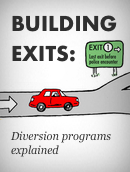 Building exits off the highway to mass incarceration: Diversion programs explained
Building exits off the highway to mass incarceration: Diversion programs explained
Diversion program" can refer to a wide variety of initiatives to keep people out of jail. We wrote one report that explains them all. Our report envisions the criminal justice process as a highway, with five major "exits" off the road to incarceration.
 Arrest, Release, Repeat: How police and jails are misused to respond to social problems
Arrest, Release, Repeat: How police and jails are misused to respond to social problems
We explain the need to redirect dollars wasted on repeatedly jailing people — who are disproportionately Black, low-income, and have greater health needs — toward community based services that prevent justice-system involvement.
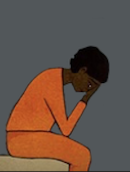 Policing Women: Race and gender disparities in police stops, searches, and use of force
Policing Women: Race and gender disparities in police stops, searches, and use of force
Women make up a growing share of arrests and report much more use of force than they did 20 years ago, with Black women most likely to be targeted.
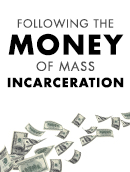 Following the Money of Mass Incarceration
Following the Money of Mass Incarceration
We estimate that policing criminal law violations costs taxpayers over $63 billion each year.
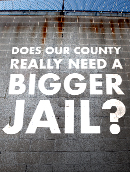 Does our county really need a bigger jail? A guide to avoiding unnecessary jail expansion
Does our county really need a bigger jail? A guide to avoiding unnecessary jail expansion
We lay out questions to ask local leaders about law enforcement practices before green-lighting proposals for jail expansion. We also explain "best practices" to help local officials avoid unnecessary arrests and incarceration.
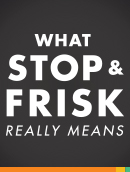 What "Stop-and-Frisk" Really Means: Discrimination & Use of Force
What "Stop-and-Frisk" Really Means: Discrimination & Use of Force
Our analysis of NYPD data on stop-and-frisk shows that the police used physical force in almost a quarter of stops — and that their use of force is also racially discriminatory.
Briefings
- Jailing the homeless: New data shed light on unhoused people in local jails, by Leah Wang, February 11, 2025
Our analysis of Jail Data Initiative data confirms the troubling practice of shuffling unhoused people into jails, at enormous moral and fiscal cost. - Despite fewer people experiencing police contact, racial disparities in arrests, police misconduct, and police use of force continue, by Emily Widra, December 19, 2024
New Bureau of Justice Statistics data reveal that concerning trends in policing persisted in 2022, even while fewer people interacted with police than in prior years. - High stakes mistakes: How courts respond to “failure to appear”, by Brian Nam-Sonenstein, August 15, 2023
Research shows that while most people who miss court are not dangerous or evading justice, the way courts treat “failure to appear” may make our communities less safe. - New data: Police use of force rising for Black, female, and older people; racial bias persists, by Leah Wang, December 22, 2022
New survey data from the Bureau of Justice Statistics on police interactions in 2019 and 2020 provide the broadest look at relations between people and police officers. The findings leave a lot to be desired (as they’re primarily pre-pandemic), but the message is clear: police are still a massive presence in our communities, and they don’t always provide the solutions and safety we need. - Policing resource round-up: Where to find data, advocacy materials, and more information about American policing, by Emily Widra and Wendy Sawyer, August 28, 2020
A list of the most valuable online resources from organizations focused on policing. - Not just "a few bad apples": U.S. police kill civilians at much higher rates than other countries, by Alexi Jones and Wendy Sawyer, June 5, 2020
Police violence is a systemic problem in the U.S., not simply incidental, and it happens on a scale far greater than other wealthy nations. - Ten key facts about policing: Highlights from our work, by Wendy Sawyer, June 5, 2020
Police disproportionately target Black and other marginalized people in stops, arrests, and use of force; and are increasingly called upon to respond to problems, such as homelessness, that are unrelated to public safety. - Police stops are still marred by racial discrimination, by Alexi Jones, October 12, 2018
National data shows that nearly 1 million people in the U.S. experience the threat or use of force by police in a given year — and they are disproportionately Black and Latinx. - Police, courts, jails, and prisons all fail disabled people, by Elliot Oberholtzer, August 23, 2017
Disabled people represent a disproportionate number of those stopped, arrested, and killed by police, largely because we rely on militarized police forces to handle mental and physical health crises, and because many behaviors related to disability have been criminalized. - Data confirms that police treat Black Americans with less respect, by Lucius Couloute, June 8, 2017
We discuss an analysis of police bodycam footage from nearly 1,000 vehicle stops. - Seizing Chicago: Drug stings and asset forfeiture target the poor, by Alex Clark and Joshua Aiken, August 11, 2017
We explain how state and federal law enforcement practices target low-income, Black, and Latinx residents.
Related issues
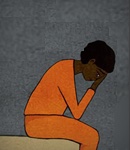 Race and gender
Race and gender
The justice system's unequal treatment of poor people hits people of color and women the hardest. Our research provides race and gender breakdowns in the criminal justice system.
Research Library
Didn't find what you were looking for? See the Policing section of our Research Library, a curated collection of over 200 academic and policy reports on the subject.
Events
- April 30, 2025:
On Wednesday, April 30th, at noon Eastern, Communications Strategist Wanda Bertram will take part in a panel discussion with The Center for Just Journalism on the 100th day of the second Trump administration. They’ll discuss the impacts the administration has had on criminal legal policy and issues that have flown under the radar. Register here.
Not near you?
Invite us to your city, college or organization.
 Building exits off the highway to mass incarceration: Diversion programs explained
Building exits off the highway to mass incarceration: Diversion programs explained Arrest, Release, Repeat: How police and jails are misused to respond to social problems
Arrest, Release, Repeat: How police and jails are misused to respond to social problems Policing Women: Race and gender disparities in police stops, searches, and use of force
Policing Women: Race and gender disparities in police stops, searches, and use of force Following the Money of Mass Incarceration
Following the Money of Mass Incarceration Does our county really need a bigger jail? A guide to avoiding unnecessary jail expansion
Does our county really need a bigger jail? A guide to avoiding unnecessary jail expansion What "Stop-and-Frisk" Really Means: Discrimination & Use of Force
What "Stop-and-Frisk" Really Means: Discrimination & Use of Force



